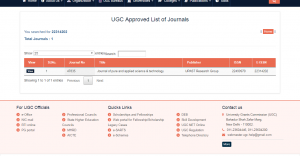Biochemical consideration of HsCRP as a bond cursor to metabolic Syndrome
Himanshu Tyagi1,*, Vishal Modgil2 and Shashank Tyagi3
1,*Ph.D. Scholar, Medical Biochemistry, Singhania University(Raj), India.
2Department of Medicine, Shivalik Hospital, Ghaziabad, India.
3Muzaffarnagar Medical College, India.
Metabolic syndrome has generated a great deal of interest in recent years for researchers in India. The role of the acute phase protein Hs-CRP as a link marker to Metabolic Syndrome (MetS) in Indians is significant. Whose plasma concentration increases by 25% or more during inflammatory disorders. Studies have shown that elevated level of this protein can lead to an increased risk of hypertension and Cardiovascular Disease (CVD) as well as metabolic syndrome. The MetS is a clustering of components that reflect over nutrition, sedentary lifestyles and resultant excess adiposity. Metabolic Syndrome is posing a major public health challenge to the health systems in developed and developing countries. This study is an attempt to see the role of biochemical markers such as High Sensitive C reactive Protein (Hs-CRP) & Blood glucose in Metabolic Syndrome in study cases of Indian population. The 405 study subjects aged between 25-65 yrs from general population in Ghaziabad (U.P), India, were taken, who attended the hospital for general checkup. HsCRP, Lipid profile and Blood Glucose of subjects were evaluated. On application of ATP 3rd criteria on the screened subject patients, they are classified. Our study found that the number of subjects having MetS was 173 (42.71% of total). In the subgroup of metabolic syndrome with diabetes, the total number of subjects was 105 (25.92%) in which age wise distribution was 26 (6.41%) in 25-45 yrs and 79 (19.50%) in 45-65 yrs. In the second subgroup of metabolic syndrome without diabetes total number of subjects was 68 (16.79%) in which age wise distribution was 16 (3.95%) in 25-45 yrs and 52 (12.83%) in 45-65 yrs. The study proposes the inclusion of biochemical parameter HsCRP in the criteria for defining cases of metabolic syndrome, so that more metabolic syndrome cases can be picked up at earliest. This issue is especially pertinent for the Indian patient population in whom cardiovascular disease is becoming increasingly common in both sexes and in age group of 25-65 yrs. There should be emphasis on detection of metabolic syndrome and intensification of targeted preventive strategies. In this study; there is strong evidence that Hs-CRP should be included in the case definition criteria or diagnostic criteria of Metabolic Syndrome. The study proposes the inclusion of biochemical parameter Hs-CRP in the criteria for defining cases of metabolic syndrome in Indians. So that more cases of Metabolic Syndrome can be picked up at earliest.
Keywords: Metabolic Syndrome (MetS), High Sensitive C reactive Protein (Hs-CRP).






